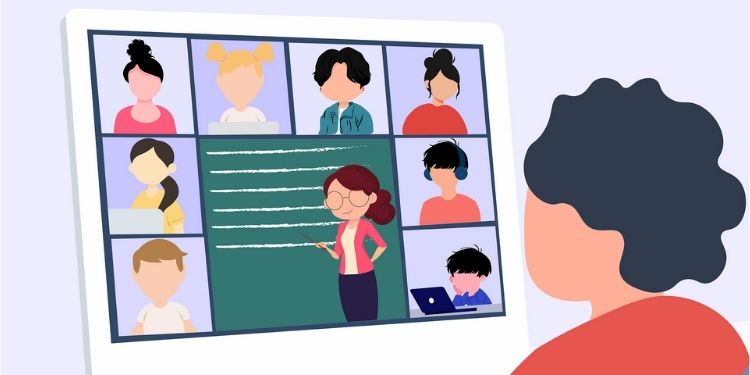Edtech companies are on a layoff spree. The reopening of schools post pandemic has had an adverse effect on the blooming edtech sector. But is that the only reason? Or has the bubble burst?

“These sudden layoffs by the Indian edtech companies are majorly due to aggressive illogical spending on advertising rather than on product development and improvising the product offerings to the customers. How come, one fine day, those inevitable human resources become extras?” questions Sumesh RamanKutty, CMO, Augmont Gold.
“In fact, every amalgamation and merger comes with the weakest begging for funds from the strongest, and the final impact is layoffs. The recruitment is also done with an unimaginable CTC that could make them unemployable in the market after layoffs. With major edtech spending on marketing, the pockets of broadcasters and celebrities got fatter. It is high time to understand that these endorsers are like fireflies. They don’t keep loyalty compared to the employees that are loyal,” observes Ramankutty.
Reports suggest that Indian edtech companies are expected to witness a dip in business every quarter.

“The pandemic gave online learning a big boost and increased its adoption across the spectrum – from junior schoolers to employees upskilling to improve their prospects. Edtech was naturally a big gainer. Now that physical spaces are opening up and both organisations and educational establishments are adopting a hybrid model, it is clear that the edtech party is over. However, online learning is a way of life now and will continue to be used, though it will be integrated with classroom learning as a hybrid model will become a reality. Also, some elements of learning, like schools, will move back to being primarily physical,” observes Lloyd Mathias, angel investor and business strategist.

According to Himanshu Dandotiya, Business Head, Veranda Acacia, the edtech industry has been around long before the pandemic hit and will continue even after the pandemic subsides.
“With the accessibility of low-cost data services and affordable handheld devices, online learning as a concept grew in the 2010s, and we witnessed thousands of edtech companies opening up. These edtechs have been able to solve many problems for the Indian educational ecosystem. Going forward, the edtech sector should keep innovating and further strengthening the learner and teacher communities, as well as help fill the gaps in the existing system to aid students across the country. Both online and offline mediums of education will not just co-exist, but will complement each other in a post-pandemic situation,” he adds.

According to Vivek Varshney, Founder of SpeEdLabs, a personalised test practise platform, it will be premature to say that the online learning bubble has burst because there are still a lot more changes and realignments in the business models that are taking place. Whether it will be an online or hybrid model would be decided over a much longer period – between 5 and 10 years – he contends.
“The online learning model was, moreover, a forced choice for most of the students because the learning behaviour of many students is not aligned with online learning. However, it is very clear that a traditional, pure-play, non-tech offline is not going to sustain, so the system which is definitely going to progress is the hybrid learning model which combines the benefits of both offline as well as the online power of technology. The bubble has burst to a great extent, but still there is a lot more correction that has to happen in the pure online delivery model,” he adds.

“Online learning is here to stay. Online learning is not a mere supplement but a complimentary bridge between the evolving world and obsolete academics,” contends Suman Matcha, CEO, OAKS (Online Adaptive Learning System).
He adds that the unwelcomed lockdown forced students to adopt learning through online platforms be it for Bharatanatyam or coding.
“Now, with schools resuming their conventional mode of teaching with a twist and tweak, a re-calibration will emerge and innovative hybrid models will evolve. To exemplify, a learning app will now turn out to be a perfect go-to tool for teachers to substitute traditional ways of assigning homework, organising slip tests, and analysing students’ performance, etc.,” he adds.
Ramankutty concurs that there will always be a market for online learning and related tutorials. There is opportunity too, he notes, with increased penetration of the internet and electricity opening up tier 3 and 4 markets. But while online learners are looking for more and better quality content and affordable cost, most edtech brands are competing in the media to buy cricket and other high-value, inflated properties, he rues.
“They forgot their customer and their changing demands. Instead of continuous investing or buying out these properties, they should have done a dipstick survey to understand if that had helped in acquiring new customers at a lower cost,” he adds.
He explains, “In any case, K12 ed tech platforms should not compete with the schools. They can be seen as more of an additional requirement unless they partner with online and offline teaching in schools. But when it comes to UG and PG, there are multiple courses that are not available in Indian universities. Hence, those categories can always take the share from the offline model (regular colleges university programmes). If the argument is about branding, then there is no end to it. After all, when the game is for valuation, layoffs have now become ritual. The broadcasters and agencies benefit from it at the cost of employees.”
Will the downsizing be followed by a reduction in media spends?
“Edtech players who were in the customer-grab phase in the early stages of the pandemic, driven by growing valuations and easy funding, will now face a reality check,” observes Mathias.
“As liquidity is tightening and investors are looking at business models more rationally, the bottom line will start to matter more and more. This phase will mean consolidation in the edtech space and an increased pace of mergers and acquisitions. Existing players will become more cautious with their spending and growth plans. This has resulted in promoters looking to reduce costs, and some of the recent layoffs are a consequence of this. This could also have edtech reducing media spend in the short term,” he adds.

“Less capital going into edtech will necessarily lead to some reductions in all kinds of spending across the industry in the short term. But after that, once the dust settles, the winning companies will be in a position to scale up big and fast, and capital will flow again. I think the current cycle in edtech is mostly about digital as a delivery model. But digital as a source of new and better knowledge is still largely undeveloped and could be the next big opportunity for investment. This is why I believe that, in a hybrid educational model, global schools have a lot to say, as their model is not just the delivery of learning but also the generation of knowledge. It is a similar situation to the one we witnessed in the video-on-demand market. As much as Netflix and others have changed the way we consume content, the companies that excel in content creation – think Disney, for instance – are still there and very well positioned,” says Professor David Bardolet, Dean and Professor of Strategy, SDA Bocconi Asia Center, Mumbai.

“The entire industry is collectively struggling with one big problem, which is reducing the customer acquisition cost (CAC). If this occurs, media spending will naturally be reduced. However, higher CAC will mean more media spending,” says Ujjwal Singh, CEO & President, Infinity Learn by Sri Chaitanya.
“Some ideologies are difficult to change. Some edtech companies’ DNA is to burn out and spend aggressively until the funding funnel runs dry. After burning out, they easily raise the next round of funds.We have also seen brands that have laid off employees still into the media buying of high-value properties and sponsorships,” says Ramankutty.

“In essence, edtech had to spend heavily on media to build awareness in the first phase of their entry and market penetration. Reportedly, edtech firms invested large sums in customer acquisition, from Rs 10,000 to Rs 75,000 per learner. This has also led to a cash burn that is unsustainable over the medium term. In addition, due to geopolitical and macroeconomic shifts, startup funding has dried up globally in 2022.As edtech firms enter the next phase of their maturity curve, i.e. growth and market expansion, they will focus increasingly on building familiarity and favourability. This will lead to a reduction of media spend and an increase in more efficient below-the-line strategies such as direct marketing, promotions, and PR-led advocacy that will enable them to lower customer acquisition costs and strengthen their balance sheets by being cash flow positive, and in some cases, even become profitable at net income level,” observes Sanjay Viswanathan, Chairman & CEO, Ed4All.
For now, the high-decibel advertising of edtech brands doesn’t seem to have slowed down. If market watchers are to be believed, it is a matter of time before it does.

















